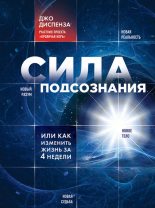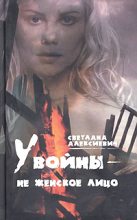Christy Esmahan
THE LAPTEV VIRUS
A Novel
For Dr. John R. Stevenson, and in memory of Drs. Donald C. Cox, Robert J. Brady and Jnanendra K. Bhattacharjee. They were truly outstanding Microbiology professors, my mentors whom I hold fondly in my heart
“Strange things are slumbering in the permafrost—and some of them are able to wake up”
—Veronique Greenwood
PROLOGUE
On March 3, 2014, Geoffrey Mohan from the Los Angeles Times reported:
A 30,000-year-old giant virus has been revived from the frozen Siberian tundra, sparking concern that increased mining and oil drilling in rapidly warming northern latitudes could disturb dormant microbial life that could one day prove harmful to man.
The latest find, described online Monday in the Proceedings of the National Academy of Sciences, appears to belong to a new family of [giant viruses] that infect only amoeba. But its revival in a laboratory stands as “a proof of principle that we could eventually resurrect active infectious viruses from different periods,” said the study’s lead author, microbiologist Professor Jean-Michel Claverie of Aix-Marseille University in France.
“We know that those non-dangerous viruses are alive there, which is probably telling us that the dangerous kind that may infect humans and animals — that we think were eradicated from the surface of earth — are actually still present and [could be] eventually viable, in the [frozen] ground,” Claverie said.
With global warming making northern reaches more accessible, the chance of disturbing dormant human pathogens is increased, the researchers concluded.
Average surface temperatures in the area that contained the virus have increased more steeply than in more temperate latitudes, the researchers noted.
“People will go there; they will settle there, and they will start mining and drilling,” Claverie said. “Human activities are going to perturb layers that have been dormant for 3 million years and may contain viruses.”
[…] Claverie’s laboratory was behind the discovery in Chile, more than a decade ago, of the first giant DNA virus, dubbed [Megavirus chilensis]. They next identified a far larger virus of an entirely different family in 2011, dubbing it Pandoravirus salinus, in homage to the mythical Pandora’s box that first unleashed evil on the world.
This time, they used an amoeba common to soil and water as bait to draw out a virus from a Siberian permafrost core that had been dated to 30,000 years ago.
The finding described on Monday looked like another Pandora, but it was 50 percent larger.
CHAPTER 1
“Your problem, Max, is that you take too many chances,” said Brian.
Max grunted and turned his lips down in a scowl.
“Betting a week’s wages when you only had a straight,” said Ted, chuckling. “Max, Max, we gotta teach you to hold back, think a bit, not just go for it with no fear!”
Max gave Ted a dirty look and set his jaw in grim determination, as if their little game was a serious affair, one that his companions could never understand. “No guts, no glory,” he said.
“Well now, how about another round?” asked Brian, his tone conciliatory and light.
Brian and Max were bunk mates. This was the first time that either of them had lived in the Arctic. Where Max was large, broad of shoulder and belly, Brian was short, slight of build and he always wore a cap, even indoors. Over the weeks the two men had developed a friendship as Brian enjoyed listening to Max’s hunting stories and was good at explaining things about their work in a way that Max could easily understand.
Just then Evan walked in and everyone’s demeanor changed. “We need to get going,” he announced.
“Are you sure this is a good idea? I mean, do you think the weather will hold?” said Ted. Max didn’t like Ted at all as he thought that he was too full of himself, always bragging about all his experience. Asking this kind of question was just another way of showing off.
“I do,” said Evan, looking at his watch. “I think we’ve got a good four hours. Let’s suit up and get in the bird. I want to take off in the next fifteen minutes if possible.”
Max was already in his boots and warm jumpsuit, though he was wearing only a thermal shirt underneath. He reached for his thick pullover sweater, and then donned his heavy overcoat. It was bright red and had several thick bands of light-reflective material sewn into it. He didn’t zip it up yet—there would be time to do that while they were in the air. As Brian and Ted re-appeared, also suited up, Max grabbed his shotgun and the case of tranquilizer darts.
Soon all four were airborne, headed for the site where they would be taking yet another ice core sample. “There’s a storm on the way, but I’m confident we’ve got a few hours,” Evan repeated to the crew in a loud voice, speaking over the sound of the helicopter blades chopping through the frigid air. He was both the pilot and the team leader. “Riesig-Alaska identified another part of Laptev Bay, near the shore, and they want a few samples from the permafrost before they decide if they will want to poke any further holes.”
Before he got this job, Max had no idea how complicated oil exploration was. He had grown up in Texas, but somehow he had never thought much about what went on before gasoline magically showed up at the local gas station, all ready to be pumped into his big black pick-up truck. After being hired by Riesigoil, however, he had undergone some training and was learning a lot from the geoscientists with whom he lived for weeks at a time in a barracks up in the Arctic. They used sound wave equipment to explore the layers under the ground, took samples, and sent all of the information to the larger base in Alaska.
Riesigoil geologists then employed 3D visualization techniques to identify areas that might harbor oil and natural gas underneath. Once potentially promising areas were identified, exploratory wells were dug, and later, if all went well, they would dig a bigger well. But even then, Max’s colleagues had explained, even after all the testing and modeling, the chances of hitting a good source of oil were still only about 1 in 5. It was a long, expensive pursuit, and one that took years before any profits could be made.
Max learned these things more out of idle curiosity than anything else. Unlike most of the people in his barracks, Max had not been recruited because of his years of schooling and experience, but rather because of his hunting skills. Growing up on a ranch in the Texas hill country, Max had gone hunting from the time he was quite young, maybe six or seven years old, and it was what he loved to do most in the world. His father had also been a big hunter, as had his uncle, and he had fond memories of the long road trips they would take down to South Texas, whenever they could snag a week or two of vacation, to hunt for turkeys, feral hogs (his uncle’s favorite) and deer.
On the night stand by his bunk Max kept a small framed photograph that his father had taken of him with his boot propped on the hind quarters of the first buck he had ever shot, its full crown almost larger than he was. The rush of adrenaline he had felt when he first spotted the buck in his binoculars had made his hands tremble. On previous occasions, trembling hands had led to missed shots and his quarry, thus alerted, had fled. But this time he had managed to calm himself down, and his shot had been true. After that, there had been no stopping him.
Max’s friends from high school had teased him, saying that he would never get a good-paying job by pursuing his hobby. He had worked as a truck driver for a few years, but he tired of the road and longed for time off so he could get a chance to go hunting. Then one day he had seen an ad in the newspaper for an experienced hunter, and he had applied online that same evening, attaching dozens of photos of large prey that he had felled. It was the only way he could think of to impress the people who might otherwise frown at his meager work experience.
The job meant that he would have to live way up north in the Arctic for a few months of the year, but he would make enough money during that time that he could afford to take the rest of the year off and spend lots of time hunting. So far, to his dismay, being a bear hazer at Riesigoil had been much more boring than he had expected. Protecting the workers from polar bears had sounded like a lot of fun, but it had turned out to be more like just babysitting the workers while he held a toy shotgun in his hands. Still, whenever he got too frustrated by the tediousness of the endless expanse of ice, he reminded himself of the months of hunting that lay ahead, and that generally cheered him.
“The machinery’s already set up there? Everything’s ready to go?” asked Brian, his voice cracking as he strained to be heard over the loud stuttering of the helicopter. He was referring to the drilling equipment they would need to use to be able to remove the ice core samples. Sometimes they were required to spend extra time setting up all of the equipment, but often it was another team that identified the area and prepared it for their team.
Since they wanted samples from depths greater than 30 meters, they would need to use specialized drills that hung on cables. The drills could be electromechanical, or electrothermal, Brian had explained to Max earlier that week. Thus Max now knew that, in Brian’s opinion, electrothermal drills were not as consistent and were to be avoided if possible.
“You bet,” said Evan, consulting his instruments. “They have it all set for us. We should be able to get in and out in about two hours.”
As they gained altitude, Max, who was sitting by a window, looked out and saw gray everywhere: the sky above, the ice below, and everything in between. The entire landscape, as far as the eye could see, was varying shades of unbroken gray. He was certain that whatever other faults it might have, Texas never had this much gray.
The ride was a short one, and within fifteen minutes, the four men had reached the site where the drilling equipment stood waiting for them. Evan put the helicopter down and soon they were outside, feeling the cold wind biting their exposed faces. Max walked over with Brian, who was wearing a bright red knit cap, and watched him as he inspected the long, cylindrical drill bit which was connected to a slender cable that would soon suspend the drill shaft as it made its way down into the hole. On the end of the drill bit Brian showed Max the four carbide teeth that would cut into the ice, shaving layer after layer as it penetrated downward.
“See these two barrels there?” Brian asked.
Max peered in and saw an inner one and an outer one.
“That motor you see there,” Brian said, indicating with his gloved finger, “is attached to the inner one and that’s what makes it rotate.”
Max peered at the inside of the barrel of the inner core and saw the threads which spiraled up and around the inside. “What are them stringy things there for?” he asked.
“Those are called ‘threads’ and they serve to remove the ice chips that get freed by the carbide teeth, you see. That helps to keep the chips from getting in the way of the tip of the drill,” explained Brian.
Max sauntered back toward the metallic







